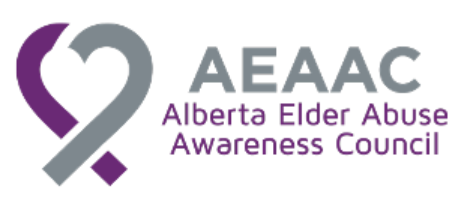- Details
- Published: 07 December 2017
The following is part of our project “Increasing Access to Justice for Older Adult Victims of Sexual Assault: A Capacity Building Approach”, funded by the Justice Canada Victims Fund.Learn more about this project or consult the full list of resources
Elder abuse is a broad, varied, and intensely sensitive issue. Professors Isabel Grant and Janine Benedet at UBC's Peter A. Allard School of Law recently published “The Sexual Assault of Older Women: Criminal Justice Responses in Canada” where they discuss an issue that they describe as “one of the final taboos of modern life”. Grant and Benedet shed some light onto the underrepresented and misunderstood subject of sexual abuse of older women (which they define loosely as women over 50 years old), an especially pertinent topic as Canada’s population ages. The article outlines four points: (a) that the case law of sexual assault against older women resembles the case law of the general population of the 1980s and 1990s in that they focus on stranger assaults and is disconnected from the realities of elder abuse; (b) that spousal sexual abuse is underreported due to issues with consent concerning dementia and incapacity; (c) that women with significant cognitive disabilities—typically those in care facilities—may be targeted because they will be unable to bring forward a complaint, and; (d) cases that involve sexual assault against a women in long-term care committed by a family member are present despite their lack of acknowledgment in literature, reports, and prosecutions.
The reality of Elder Abuse
The authors start by highlighting the harsh realities of elder sexual abuse. The statistics and available case law do not, by any means, provide the full picture. Grant and Benedet find that the case law paints a picture of elder abuse that focuses on stranger assaults where the assailant breaks into the homes of older women at random. This is clearly not the case. In an effort to be as inclusive as possible, Grant and Benedet also consider other types of decisions that suggest that criminal proceedings have occurred (deportations, Criminal Code review board decisions). As women age, they are more likely to depend on others and are increasingly vulnerable to social isolation, which are risk factors for abuse. Vulnerability and risk factors increase for women from ethnocultural minorities and indigenous older women. The consequences of sexual violence are also often heavier for older women.The physical and emotional impact of sexual violence is likely to affect older women more profoundly; Professors Grant and Benedet cite a study that found that over one half of sexual abuse victims in nursing homes died within twelve months of the incident. For elders living with dementia, the effects of sexual violence can manifest themselves as severe psychological trauma, displayed through detrimental behavioural changes towards themselves and others. Grant and Benedet also note that a number of victims who, until then had lived at home, had to leave their lifelong homes and move into institutions, while others suffered permanent injury, major depression and a significant deterioration of their health.
Consent in Spousal Relationships
The article also touches upon spousal sexual abuse and discusses it in tandem with mental illnesses, especially dementia. The question arises whether and how to recognize consent between sexually intimate couples, if one or both of the partners have dementia. There are a number of legal, ethical, and scientific factors at play that need to be considered and will be explored at length in a future blog post.
Roles of Trust, Power, and Authority
Some older women experience increased dependency which makes them especially vulnerable to sexual abuse and violence. The article points out that abusers often exploit their positions of trust, power, and authority over older women. This abuse of power occurs in a wide variety of settings, whether in situations where women are homeless, living in the community with their families, in acute care hospitals, in supportive housing, or long-term care facilities. In a study of the risk of sexual assault among older women living in their homes, long-term care facilities, or in homeless settings, 75% of women reported to have known their attackers1. Similarly in institutional settings, 67% of women were attacked by their service providers.
Criminal Justice Response
Unsurprisingly, Grant and Benedet find many issues with the criminal justice response to sexual abuse. They first address the evidentiary and witness problems. A variety of factors contribute to this: women suffering of mental illnesses like dementia often have issues expressing and testifying to what happened to them (even when they are able, they are not always considered reliable witnesses); dependency can discourage victims from reporting their abuse by fear of retaliation; cultural and linguistic differences can also represent an obstacle for older women to speak about their abuse. The article also finds fault in the criminal judicial process because of its delays in proceedings. These are sometimes so prolonged that the complainants die or become incapable of testifying before the case goes to trial.
Even in cases that do result in successful prosecutions, Grant and Benedet find little to no evidence that attackers suffered severe sentences. They found rather, that the most severe sentences were associated with violent break-ins, even though it is clear that these are the exception and not the norm.
Where do we go from here?
The conclusions that Grant and Benedet arrive at are deeply unsettling and beg the question of where should we, as a society, go from here? Clearly there has to be increased access to justice for victims—and generally anyone associated with the traumas—of elder abuse. Grant and Benedet write that for women in care facilities, “It is important for women to know their rights to be free from unwanted sexual contact and receive clear channels for reporting abuse.” While this certainly needs to extend to all victims of sexual abuse, it also important that the rest of society to be aware as well.
More specifically, the legal system has to address the needs of older adults. Whether this can be achieved through changes in how we gather evidence, or setting tribunals to speed along the judicial process, there needs to be more research and focus in making the courts more accessible.
CNPEA will be addressing this topic over the course of the next three years through the “Access to Justice for Older Victims of Sexual Assault” project, funded by the Justice Canada Victims Fund. Through a series of upcoming webinars, resources, and reports, CNPEA will attempt to address gaps in access to justice for older victims of sexual assault.
1- Margaret W Baker, Naomi F Sugar & Linda O Eckert, “Sexual Assault of Older Women: Risk and Vulnerability by Living Arrangement” (2009) 6:4 Sexuality Research & Social Policy.

















